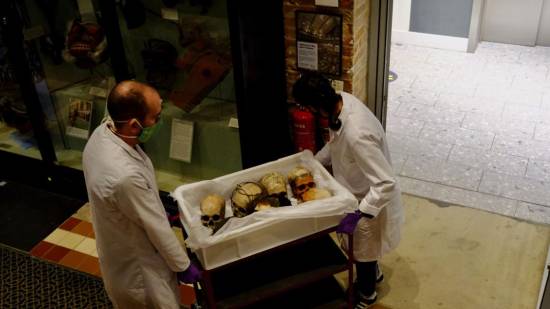Oxford University Museum removes shrunken heads which 'reinforced racist thinking' Featured
A collection of shrunken heads has been removed from a museum linked to Oxford University as part of what it refers to as its decolonization process.
The Pitt Rivers Museum has been closed for several months due to the coronavirus pandemic. When it reopens on September 22, it will look rather different to visitors.
Staff have been removing human remains from its collection of more than 500,000 artifacts, following a three-year review of displays and programming "from an ethical perspective." Overall, 120 objects containing human remains were removed from being on view, plus an additional 71 non-biological objects which were in the same displays, the museum told CNN Tuesday.
The museum said in a statement Monday that the changes were motivated by a desire to "deeply engage with its colonial legacy."
The museum of anthropology, ethnography and archeology acquired its vast collection, which includes musical instruments, weapons, masks, textiles, jewelery and, tools, over 130 years.
Among the artifacts are the Shuar Tsanta -- or shrunken heads -- made by the Shuar and Achuar people of Ecuador and South America.
Formed from human, sloth and monkey heads, they were much sought after and collectors would pay one gun per head, "leading to a steep increase in violent warfare locally at the height of the 19th and 20th century collecting," the museum said.
Acquired by the museum between 1884 and 1936, the heads have been on display since the 1940s.
The museum inspired the magic shop in Knockturn Alley in the film adaptation of "Harry Potter and the Prisoner of Azkaban," which featured talking shrunken heads. A spokeswoman for the museum told CNN that the production team visited the museum while researching the scene.
Much of the museum's collection is "closely tied to British imperial expansion and the colonial mandate to collect and classify objects from the world over," the museum said, with many of the historic labels on the artifacts featuring "racist and derogatory language, commonly used at the time."
The heads, as well as other human remains including Naga trophy heads and the mummy of an Egyptian child, have now been moved to storage.
The museum said that it has not been asked to return the heads to the Shuar community, but that it remains "open to any discussions about their repatriation and will continue in conversation with Shuar delegates over the next years."
The museum said that it still "takes care of," rather than owns, more than 2,800 human remains from different parts of the world.
Descendant communities are being contacted to find "the most appropriate way to care for these complex items," it added.
Laura van Broekhoven, director of the museum, said in a statement: "Our audience research has shown that visitors often saw the museum's displays of human remains as a testament to other cultures being 'savage', 'primitive' or 'gruesome.'
"Rather than enabling our visitors to reach a deeper understanding of each other's ways of being, the displays reinforced racist and stereotypical thinking that goes against the museum's values today."
Marenka Thompson-Odlum, research associate at the museum who curated several of the new displays, said the removal of the items creates space to tell more "expansive stories."/CNN


